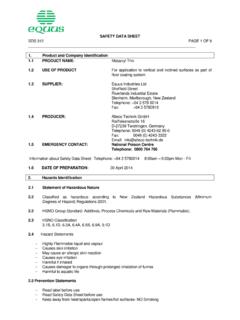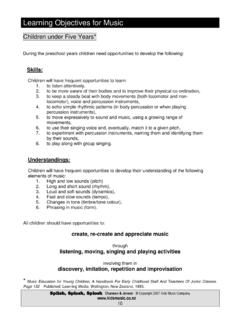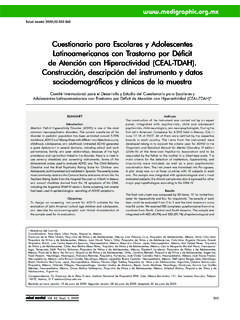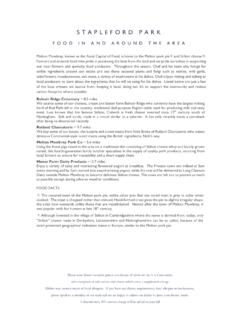Transcription of Pedestrian Slip Resistance testing to AS/NZS …
1 Pedestrian slip Resistance testing to AS/NZS : 1993 for Equus. Wet Condition Pedestrian slip Resistance testing to AS/NZS : 1993. Central Laboratories Report Pedestrian slip Resistance testing to AS/NZS : 1993 for Equus. Potter September 2010. Opus International Consultants Central Laboratories 138 Hutt Park Road PO Box 30845. Lower Hutt Telephone: 04 587 0600. Facsimile: 04 587 0604. Date: September 2010. Reference: Status: Final Disclaimer: This report has been prepared solely for the benefit of Equus. No liability is accepted by the company or any employee or sub-consultant of this company with respect to its use by any other person. This disclaimer shall apply notwithstanding that the report may be made available to other persons for an application for permission or approval or to fulfil a legal requirement. This document and its contents are the property of Opus International Consultants Ltd.
2 Any unauthorised employment or reproduction, in full or part, is forbidden. Opus International Consultants 2010. Test Report Equus Central Laboratories Report Box 38636. WET CONDITION Wellington Mail Centre Pedestrian slip Resistance testing : Wellington Contact: Ioasa Peseta Ph 576 0333. Tested by Shirley Potter Checked by Tiffany Lester Sample Lower Hutt Railway Station Sampled by Random areas in sample Client Equus Number of areas 5 Material type Duracon Specimen size 1000 x 500mm Manufacturer Equus Substrate Concrete Common name Duracon Date Tested Colour White Sample number N/A Surface finish Anti slip Project number Surface coating Duracon BC. testing . Test AS/NZS : 1993 slip Resistance of Pedestrian Surfaces - Requirements Appendix A Method for the Measurement of the Coefficient of Friction of Wet Surfaces Preparation A5 for in situ testing Date of test Type of test Fixed Location of test Lower Hutt Railway Station Surface Wet Air temperature 20 C.
3 Relative humidity 41 percent TEST REQUIREMENTS. AS/NZS requires that when tested wet the Pedestrian surface shall have a mean coefficient of friction not less than , and no specimen in that sample shall have a mean coefficient of friction less than Compliance with the slip resistant performance of NZBC (d) may be verified by referring to the acceptable solution (AS 1). of that clause which cites this test standard and acceptable values. Further background to the testing and requirements is given on following pages. TEST RESULTS. Specimen number 1 2 3 4 5. Mean coefficient of friction SAMPLE MEAN WET COEFFICIENT OF FRICTION COMMENTS. September 2010 1 of 3. Central Laboratories Report This information is provided so as to direct users to the appropriate standards and Building Code clauses when using the Pedestrian slip Resistance testing results.
4 AS/NZS : 1993. The testing that was applied was in accordance with the joint Australian and New Zealand standard AS/NZS : 1993 " slip Resistance of Pedestrian Surfaces - Requirements". The scope of the standard states that these test methods are appropriate to determine the characteristics of surface materials either in the laboratory, under conditions in which the surface materials are intended to be installed, or in situ following installation. The test method is selected on the basis of whether the material is to be used in either a wet or dry area. The Method for the Measurement of the Coefficient of Friction of Wet Surfaces . is set out in Appendix A of the standard. testing for the wet surface condition uses the pendulum friction tester. The TRRL Pendulum (pendulum friction tester) has a rigid swinging arm, approximately 450mm long, which contacts the surface with a spring loaded slider, about 75by 20mm in size, at a speed of about 2m/sec.
5 The slider is of a specially designed rubber material (Simulated Standard Shoe Sole, the 4S rubber) so that the instrument delivers, as far as possible, a response that is representative of a "typical" Pedestrian wearing suitable footwear. This instrument is regarded as equating the action of pedestrians walking in unconstrained level spaces. It is believed it replicates the aquaplaning effect that can be particularly pronounced when smooth or highly glazed surfaces are wet. The requirements of AS/NZS : 1993 and the test methods have been incorporated in Clause D1 (Access ways) of the New Zealand Building Code. Friction requirements of surfaces as defined in AS/NZS : 1993 are: Coefficient of friction: Wet When tested in accordance with the method set out in Appendix A, the Pedestrian surface shall have a mean coefficient of friction of not less than and no specimen in that sample shall be less than Coefficient of friction: Dry When tested in accordance with the method set out in Appendix B, the Pedestrian surface shall have a mean coefficient of friction of not less than and no specimen in that sample shall be less than Note: It would generally be expected that surfaces that have been shown to comply with the wet requirement would also comply with the dry requirement.
6 Ramps and other sloped areas: For all sloped or graded surfaces with a gradient not less than 2 percent, the minimum required value for the coefficient of friction of either wet or dry surfaces as specified above shall be increased in accordance with the following equation, expressed to an accuracy of : 100 + M. m =. 100 M . where m = coefficient of friction required for a sloped surface = coefficient of friction obtained on a horizontal surface M = maximum gradient of slope, in percent September 2010 2 of 3. Central Laboratories Report This equation is represented in graphical form below: Coefficient of Friction Required for a Sloped Surface. Calculated for = For example, a surface with a slope of 8% would require a Coefficient Of Friction coefficient of friction of 2 4 6 8 10 12 14 16 18 20. Maximum Gradient of Slope (%). September 2010 3 of 3.






